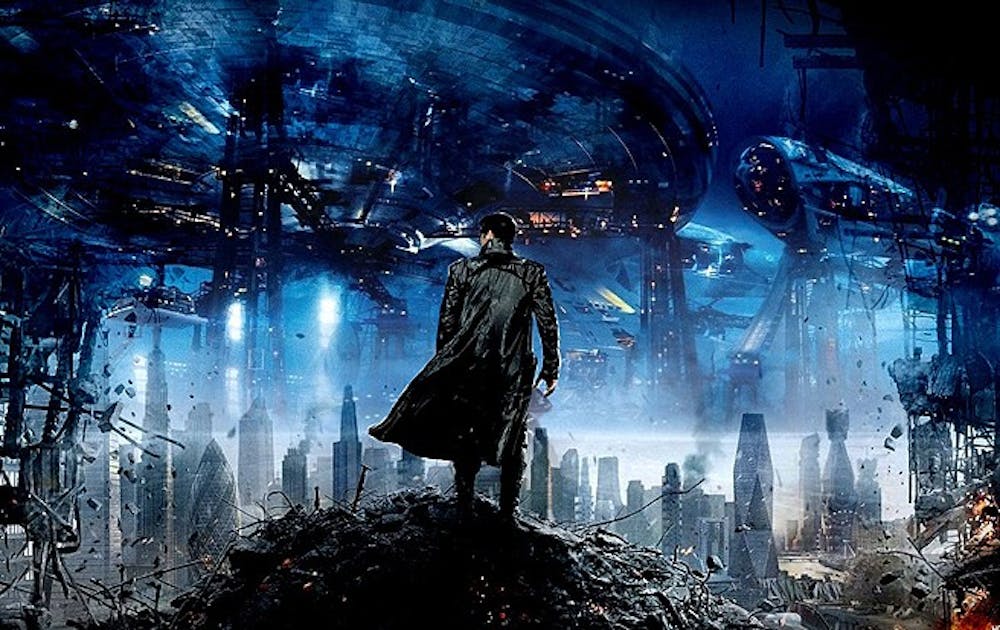J.J. Abrams’s latest installment in the hallowed halls of Star Trek lore is replete with visual wonder, but lacks in emotional heft. From its inception, the Abrams’ helmed Star trek reboot has been a departure from the staid and more philosophical treatment of previous franchises. Infusing more action sequences and epic set-pieces than any other franchise before it, this is the Star Trek for the Michael Bay generation.
The plot takes a different angle from the time-space continuum altering mayhem of the first film and mashes up storylines from the original iterations. Captain Kirk (Chris Pine) and Spock (Zachary Quinto) return as protagonists, turning in respectively strong performances as the brash but brilliant Captain of the USS Enterprise and the all-too-cold and logical half human-vulcan, respectively. The supporting cast also puts in a satisfying and sometimes brilliant effort, with special consideration given to Dr. McCoy (Karl Urban), Uhura (Zoë Saldaña) and Scotty (Simon Pegg).
But it is the main antagonist who reigns supreme. John Harrison (Benedict Cumberbatch) exudes evil from his pasty pores and generates the most dramatic energy into the narrative. Harrison—neé Khan—excels as a mysterious übermensch that threatens the stability of the United Federation of Planets and Starfleet’s very existence.
Star Trek Into Darkness’s production values is its main selling point. Gorgeous camera work that takes advantage of the latest developments in cinematic technology creates a world that is hyper-visually stimulating, rife with action sequences using quick cuts and heart-stopping shots to grab at our primal fancies. Couple that with eye-grabbing and immersive set design that entrances in every scene and you have one of the most cinematographically pleasing blockbusters of the year.
The sound design—curated by sci-fi veteran Ben Burtt—is, along with the cinematography, one of the film’s crowning achievements. Into Darkness’s lush sonic landscape was produced using triple the amount of sound effects normally found in a feature film. With over 1500 different effects meticulously strewn throughout the narrative, you can’t help but feel awe-struck and fully immersed in the Star Trek universe. That is, of course, until you are sucked back into reality by the diaphanous plotline and the (un)intentionally comic dialogue.
This occasionally embarrassing level of dialogue is one of the main weaknesses of the work. Star Trek has never shied away from camp and self-reference; Dr. McCoy’s classic one-liners (e.g. “Damn it I’m a doctor, not a torpedo technician!”) and Spock’s classic “Khaaaannn!” are veritable pop culture fodder. But Star Trek in its best manifestation has otherwise grounded itself on well-developed and cognitively stimulating character development and discussions about topics from racism, classism and other controversial talking points.
Ultimately, this film lacks the same care and level of engagement that lent previous Star Trek franchises their gravity and endeared itself to millions of Trekkies. By avoiding the tough questions and focusing on constructing the Hollywood sheen that the public desires, Abrams has crafted a work that satisfies on a visceral level but fails to linger in the recesses of your mind.
Get The Chronicle straight to your inbox
Signup for our weekly newsletter. Cancel at any time.

